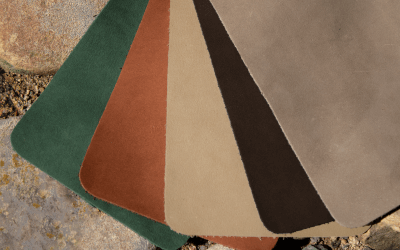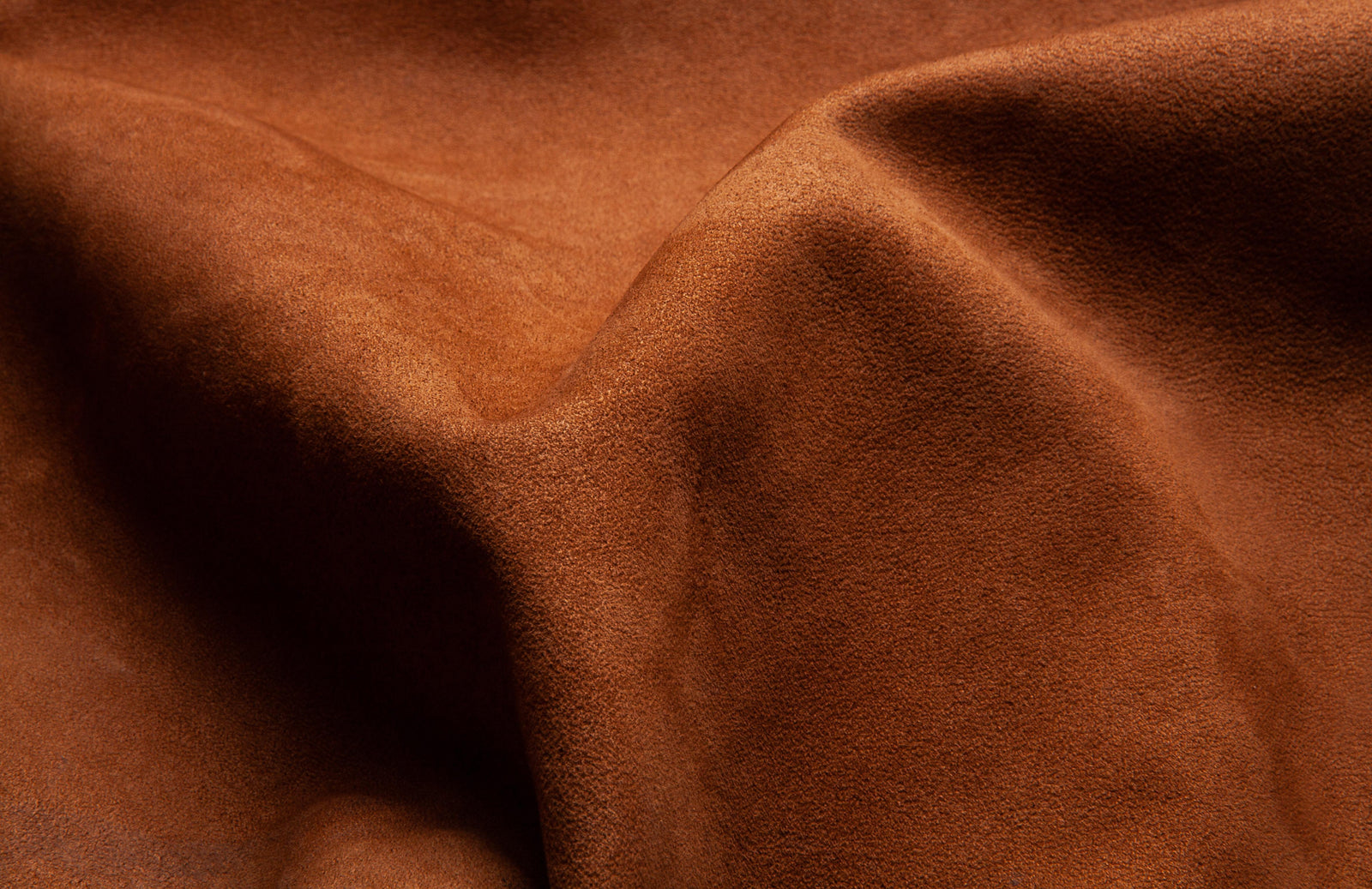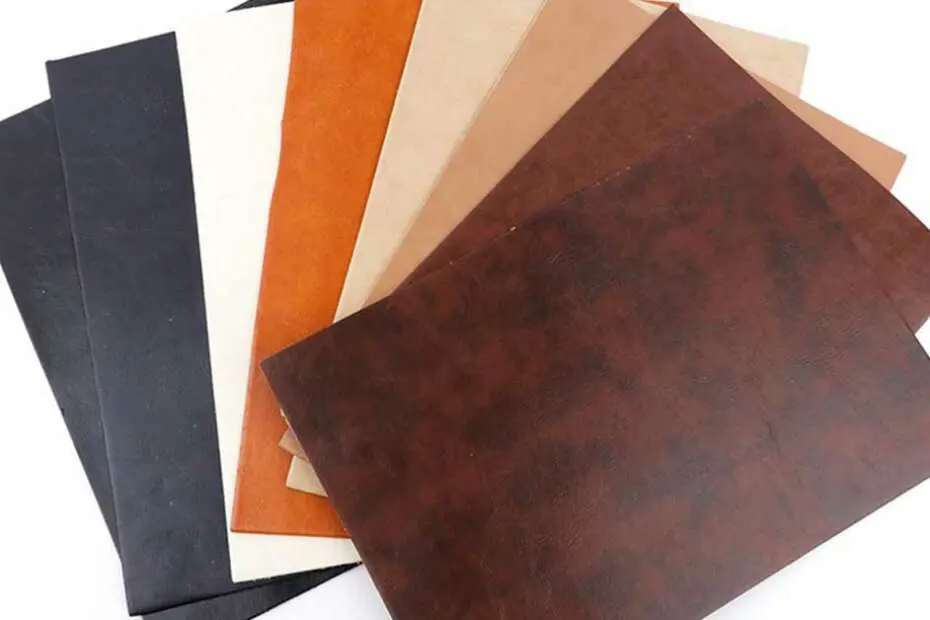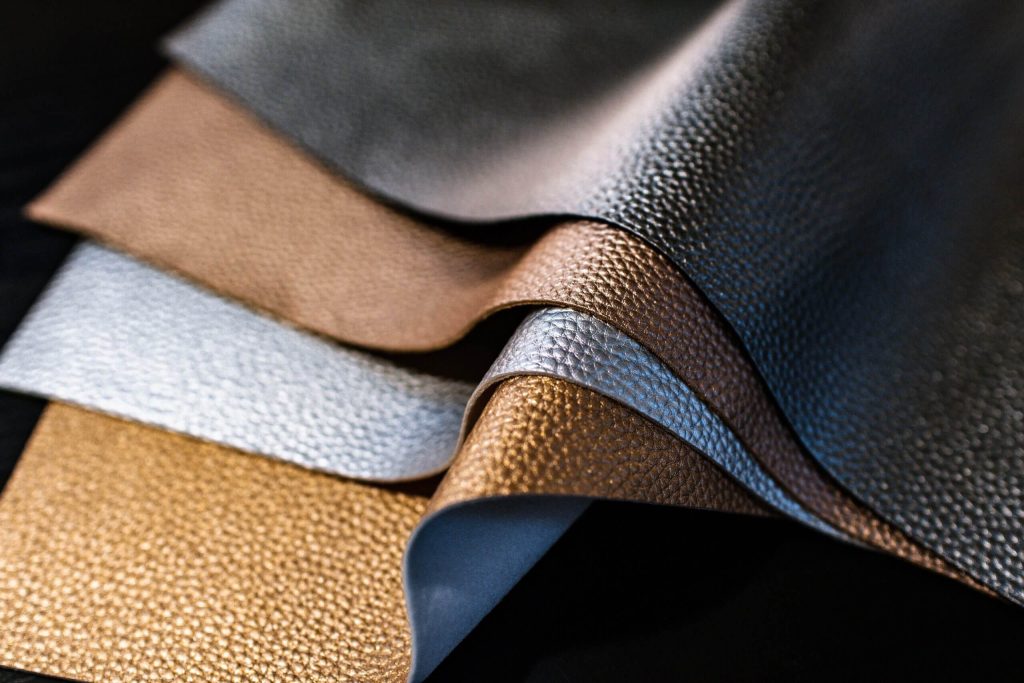
For ages, people have used leather items such as garments, bags, and even decorative pieces owing to their rich quality, aesthetics, and versatility. Many types of leather exist, from Full Grain Leather to Bonded Leather, and each of them offers certain advantages. Hence it is important to know which types are ideal for which products. In this blog, we will elaborate on 11 major types of leather. We are also going to discuss how each type can be best used, and how to maintain each type. Scroll down to learn more!
Types of Leathers and Their Uses You Need to Know About
Known for its toughness and beauty, leather has been around for ages and people use it in many different fields. Whether it’s a luxury item or a low-cost one, the leather used in the item plays a vital role in its appearance, texture, and endurance. Learning about the leather varieties and their specific properties will assist you in choosing more appropriate leather articles. Maybe they will suit your needs and way of life better than any other choice.
1. Full Grain Leather

Experts refer to full-grain leather as the best leather of all. This leather undergoes processing from the uppermost layer of the hide while retaining its inherent scars. This helps to give a distinct persona to each piece. Manufacturers use full-grain leather, similar to Nappa leather, in making some of the best goods available in the market. These include expensive chairs, leather handbags, and large-size shoes.
Best For: Luxury bags, wallets, belts, and shoes.
Care Tips: Regularly applying leather cream serves to keep the full-grain leather soft, supple, and shiny.
2. Top Grain Leather

Top Grain Leather is the second cut of the hide. If manufacturers use full grain, they sand and buff its surface to remove defects. It’s thinner, more pliable, and easier to work with than Full Grain Leather. However, for high-quality leather goods, Top Grain Leather's smooth and even surface makes it a preferable option, despite its slightly inferior durability.
Best For: Handbags, jackets, and upholstered furniture.
Care Tips: Wipe clean using a wet material. From time to time use a leather treatment after cleaning to protect its appearance.
3. Nubuck Leather

Nubuck leather is similar to the more common cured leather. It has a very unique soft textured velvet surfaced finish. Manufacturers obtain by sanding the outer layer of the leather. It can be said that it is very formal and luxurious but also sensitive. As it can easily stain or get ruined through the use of water. Designers commonly include Nubuck in footwear, ornamental accessories, and furniture upholstery for its elegant old-fashioned design.
Best For: Shoes, bags, and jackets.
Care Tips: Use a nubuck brush and keep it dry. Clean with the help of waterproof sprays to avoid stains.
4. Patent Leather

Patent leather is best known for its high gloss finish obtained by coating it with different layers of lacquer or varnish. Designers commonly use such luster for ethnic designs and styles for the most exclusive and elegant pieces of formal wear and accessories. Patent Leather is water-resistant, and while it is difficult to tear, it can scratch easily.
Best For: Shoes, handbags, and accessories.
Care Tips: Clean using a wet piece of cloth. Do not use any rough cleaning agents so that the shine is maintained.
5. Genuine Leather

Manufacturers derive Genuine Leather from different types of leather. It comes from the leftover portions of the hide after the Full Grain and Top Grain have been removed. Despite being cheaper than high-end leather, this type of leather also offers an acceptable level of strength and durability. Many brands use it extensively in lower-cost products and alternatives.
Best For: Wallets, belts, and casual footwear.
Care Tips: Occasionally use a leather conditioner and cleaner to prolong its lifespan.
6. Split Grain Leather

Manufacturers refer to Split Grain Leather as the lower fibrous section of a hide. As a result, it is less sturdy but still suitable for use in applications where strength is required. This type of leather is coarser. This makes it ideal for tough applications such as safety shoes or within vehicles for trimming.
Best For: Tool belts, work boots, and wallets.
Care Tips: Use a leather shield to avoid cracking and flaking.
7. Suede Leather

Being slightly different from cowhide leather, Suede Leather has a very soft and fuzzy feel. Such texture works wonders for style and fashion accessories. Unfortunately, Suede is not only less tough, but it can also easily stain or get damaged by water. Hence its application is for items that do not undergo intensive use.
Best For: Jackets, shoes, and upholstery.
Care Tips: Use a suede brush to get rid of dust regularly. Use waterproofing spray to protect from water.
8. Bonded Leather

Manufacturers make Bonded leather out of leather waste that they bond together using glues to produce a more leather-like product. It is cheap, but it cannot last long due to its thinness compared to other kinds of leather. Bonded Leather is mainly used in cheap-looking and priced fixtures and accessories.
Best For: Low-cost furniture and small accessories.
Care Tips: Bonded Leather is very sensitive to moisture and sunlight. Long exposure to either can cause peeling of the material.
9. Exotic Leather

The term Exotic Leather denotes unusual animal skins which can be from crocodiles, snakes, and even ostriches. These extraordinary leathers come with unique designs, textures, and visual appeal. This explains why they are widely used in luxurious complements and high fashion. On one hand, they are beautiful, however, they often need extra care and are mostly on the upper price wise.
Best For: High-end bags, wallets, shoes, and watch straps.
Care Tips: Avoid excessive exposure to sunlight and high moisture. Treat skin regularly with specific products for exotic leather care to maintain its texture and pattern.
10. Faux Leather

Faux leather is also called synthetic leather or vegan leather. It is a sort of leather which unlike the real one is composed of plastic materials made into a sort of leather finish. It is a cheap but practical solution attributable to its extremely high wear resistance property. However, it does not have the natural feel of real leather.
Best For: Jackets, handbags, furniture, and car interiors.
Care Tips: Clean by simply wiping with a wet sponge. Be careful not to expose the material to extreme temperatures as it hardens and can break. Conditioning is generally not necessary with synthetic leather.
11. Oil-Tanned Leather

Oil-tanned leather undergoes oil and wax treatment for a pliable, robust, and waterproof finish. Due to its strong-looking characteristics, this grade of leather works best for items that are intended for heavy-duty use and items made of outdoor equipment. Its resistance to wear and tear appeals to people who spend a lot of time in the outdoors.
Best For: Boots, belts, and work bags.
Care Tips: Keep away from high temperatures to avoid excessive drying. If possible, wipe off surfaces with a wet cloth. After that, a lotion for leather should be used to moisturize the skin and make it water-resistant.
Wrapping Up!
Know how different types of leather can influence your selection so that you can pick the durable and long-lasting leather of your desire. You may love Full Grain Leather for its classic appeal, Nubuck leather for its aesthetics, or bonded leather for its cheap price. Each of them has its benefits. Fit for a Queen, are you prepared for amazing quality leather shoes? Visit Barismil’s collection and get well-designed, durable shoes made of high-quality leather!
FAQs: Common Questions About Types of Leathers
1. What is PU Leather?
PU leather, or polyurethane leather, is made out of thin layers of plastic polymers. These are specially crafted to give the final product a leather-like texture and appearance. It is cheap but comparatively less strong than natural leather. It is often found in clothing and upholstery.
2. What is Vegan Leather?
Vegan Leather is a cruelty-free, animal-offering-free synthesized leather. The commonly used materials for making Vegan leather are PU and PVC. This is why consumers seek it out when they want something that resembles animal skin without actually using it.
3. What is Faux Leather?
Faux Leather is a generic term used for various synthetic leather types, including Vegan Leather, PU Leather, PVC, etc. It is an inexpensive and animal-leather-free alternative mostly preferred for use in clothes, bags, and other accessory items.
